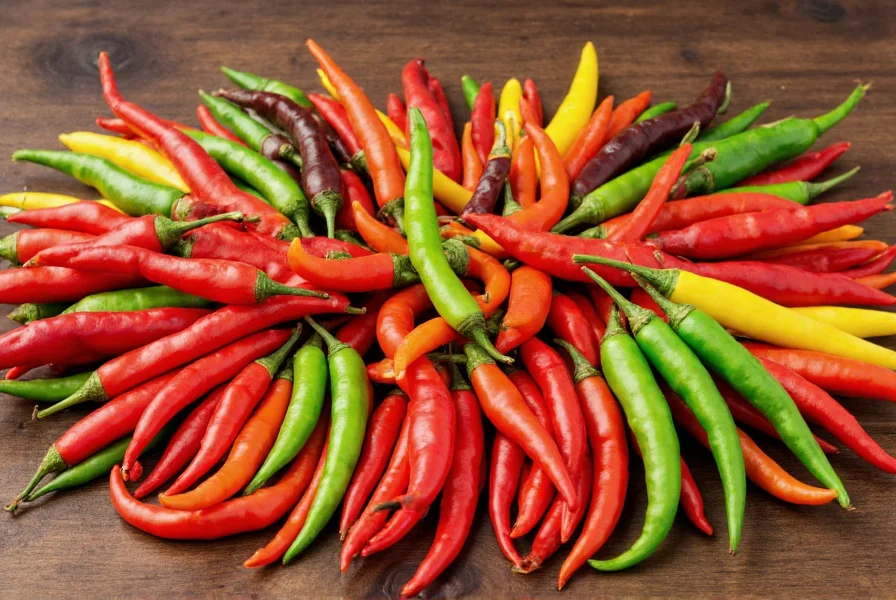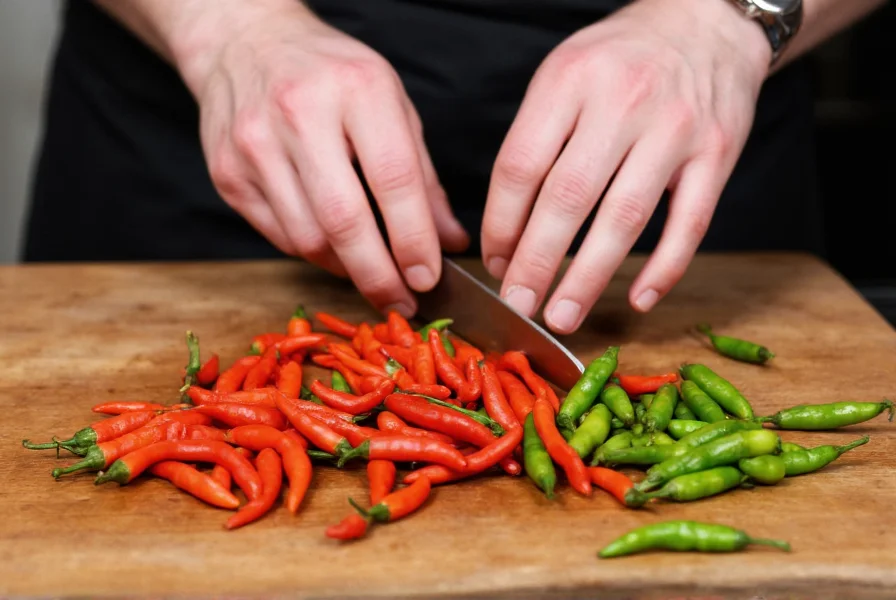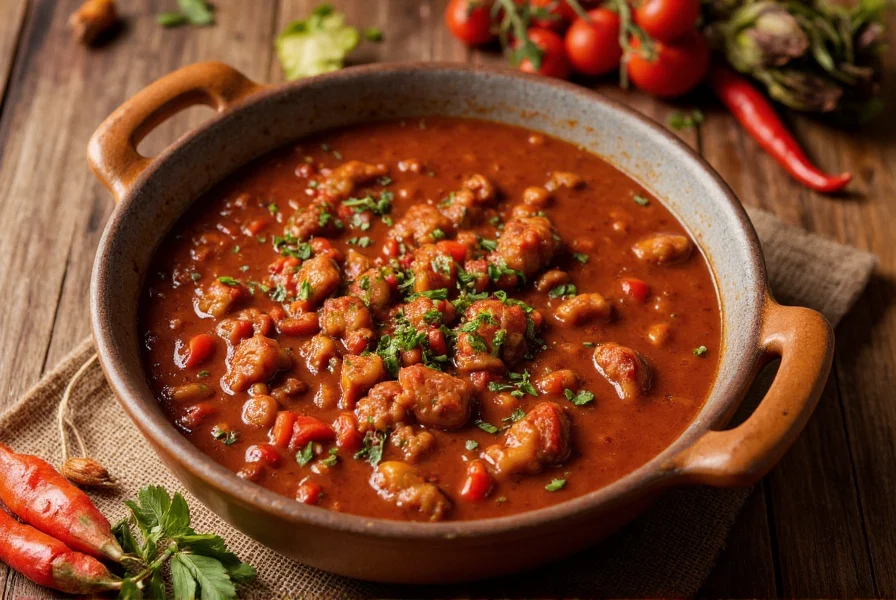Chili peppers have journeyed across the globe since their domestication in Central and South America approximately 6,000 years ago. Following Christopher Columbus's voyages, these fiery fruits spread rapidly through trade routes, transforming culinary traditions worldwide. Today, chili peppers are integral to nearly every major world cuisine, each region developing distinctive varieties perfectly suited to local dishes and palates.
The Global Journey of Chili Peppers
Originally native to the Americas, chili peppers remained confined to the Western Hemisphere until the 15th century. Spanish and Portuguese traders introduced them to Europe, Africa, and Asia, where they were quickly adopted and integrated into local food cultures. In India, chilies replaced black pepper as the primary source of heat. In Thailand, they became central to the country's signature spicy cuisine. China incorporated chilies into Sichuan cooking, creating its famous mala (numbing and spicy) flavor profile. This global adoption demonstrates how a single plant species could transform culinary traditions across continents.
Regional Chili Varieties and Their Characteristics
Each region has developed distinctive chili varieties that reflect local growing conditions and culinary preferences. Understanding these differences helps cooks select the right pepper for authentic international dishes.
The Americas: Birthplace of Chili Diversity
The Western Hemisphere remains the epicenter of chili biodiversity. Mexico alone cultivates over 60 native varieties. The jalapeño, originating in Xalapa, Mexico, provides moderate heat (2,500-8,000 SHU) with grassy notes perfect for salsas. Further south, the aji amarillo from Peru offers fruity, floral heat (30,000-50,000 SHU) essential to Peruvian cuisine. The habanero, often associated with the Caribbean, actually originated in the Amazon and spread to the Yucatán Peninsula, delivering intense citrusy heat (100,000-350,000 SHU).
| Chili Variety | Origin | Scoville Heat Units | Flavor Profile | Common Culinary Uses |
|---|---|---|---|---|
| Jalapeño | Mexico | 2,500-8,000 | Grassy, vegetal | Salsas, nachos, stuffed peppers |
| Habanero | Amazon Basin | 100,000-350,000 | Citrusy, floral | Caribbean sauces, hot sauces |
| Aji Amarillo | Peru | 30,000-50,000 | Fruity, tropical | Peruvian stews, sauces |
| Thai Bird's Eye | Thailand | 50,000-100,000 | Sharp, pungent | Thai curries, stir-fries |
| Sichuan Xiao Mi La | China | 20,000-50,000 | Sharp, immediate heat | Sichuan hot pot, mapo tofu |
Asia: The Heart of Modern Chili Consumption
Though not native to Asia, chilies have become fundamental to many Asian cuisines. Thailand's bird's eye chili (50,000-100,000 SHU) delivers intense, immediate heat essential to Thai curries and salads. In India, the Guntur Sannam (25,000-40,000 SHU) from Andhra Pradesh is prized for its balanced heat and flavor in curries and pickles. China's Sichuan region developed the xiao mi la (20,000-50,000 SHU), known for its sharp, immediate heat that complements Sichuan peppercorns' numbing effect. Korea's gochugaru (4,000-8,000 SHU) offers moderate heat with distinctive smokiness, crucial for kimchi and gochujang.

Africa: Unique Regional Adaptations
Africa has embraced chilies with distinctive regional variations. The African devil chili (150,000-350,000 SHU) from Ghana delivers intense heat similar to habaneros but with unique fruity notes. In East Africa, the piri piri (50,000-100,000 SHU) became central to Portuguese-influenced cuisine, particularly in Mozambique and Angola. Ethiopia's baria pepper (5,000-10,000 SHU) offers moderate heat with complex flavor used in berbere spice blends. These varieties demonstrate how chilies have adapted to diverse African climates and culinary traditions.
Europe: Unexpected Chili Cultivation
While not traditionally associated with chili production, Europe has developed notable varieties. Hungary's famous paprika comes from sweet and hot varieties of Capsicum annuum (0-15,000 SHU), with the csipetke variety providing moderate heat. Spain's padrón peppers (500-2,500 SHU) are famous for the "one in ten is hot" phenomenon. More recently, the UK has developed the 'Dragon's Breath' chili (reportedly 2.48 million SHU), though its measurement remains controversial among horticultural experts.
Understanding Chili Heat and Flavor Profiles
When exploring global chili varieties, understanding both heat measurement and flavor characteristics is essential. The Scoville scale measures capsaicin concentration, but doesn't capture flavor complexity. Many chilies offer nuanced tasting notes beyond simple heat:
- Fruity chilies: Habaneros, scotch bonnets, and aji amarillos often feature tropical fruit notes
- Smoky chilies: Chipotles (smoked jalapeños) and gochugaru provide deep, complex smokiness
- Earthy chilies: Ancho and pasilla peppers offer rich, raisin-like earthiness
- Floral chilies: Some Thai varieties and certain habanero strains have distinct floral notes
Professional chefs working with international cuisines often select chilies based on these flavor profiles rather than just heat level. For example, authentic Jamaican jerk seasoning requires scotch bonnet peppers specifically for their unique flavor, not just their heat.
Practical Guide to Using Global Chilies
Successfully incorporating international chili varieties into your cooking requires understanding their proper handling and application:
Selecting Fresh Chilies
Look for firm, glossy peppers without wrinkles or soft spots. Color should be vibrant and consistent with the variety. Avoid chilies with black spots or signs of mold. For dried chilies, choose those that are still pliable rather than brittle, with rich color and strong aroma.
Handling Hot Chilies Safely
Always wear gloves when handling extremely hot chilies like habaneros or ghost peppers. Never touch your face after handling chilies, and wash hands thoroughly with soap afterward. If you experience burning, dairy products (milk, yogurt) provide relief better than water.
Substituting International Chilies
When authentic varieties aren't available, consider these substitutions for global recipes:
- Thai bird's eye chili → serrano peppers (use 2:1 ratio)
- Aji amarillo → orange habanero with a touch of apricot
- Sichuan xiao mi la → cayenne peppers with black pepper
- Gochugaru → ancho chili powder with smoked paprika

Cultural Significance of Chilies Worldwide
Chilies hold deep cultural significance beyond their culinary uses. In Mexico, chilies are celebrated in annual festivals like the Pueblo Mágico de Zitácuaro. In Thailand, the phrase "kin khao kap phrik" (eat rice with chili) represents the essence of Thai cuisine. India's Andhra Pradesh region considers chilies so important that they feature in religious ceremonies. These cultural connections demonstrate how chilies have become woven into the fabric of societies worldwide, transforming from simple agricultural products to cultural symbols.
Exploring the Future of Global Chili Cultivation
As interest in international cuisines grows, so does demand for authentic chili varieties. Farmers worldwide are rediscovering heirloom varieties and developing new cultivars suited to specific culinary applications. The global chili market continues to expand, with specialty chilies becoming increasingly available through farmers' markets and online retailers. This trend allows home cooks to experiment with authentic international flavors previously difficult to source outside their regions of origin.
Frequently Asked Questions
What is the most commonly grown chili variety worldwide?
Capsicum annuum is the most widely cultivated chili species globally. This category includes familiar varieties like jalapeños, bell peppers, cayenne peppers, and many regional specialties. Its adaptability to various climates and long history of cultivation make it the dominant chili type found in markets worldwide.
Which country consumes the most chilies per capita?
Thailand consistently ranks as the country with the highest per capita chili consumption, with estimates of 200-300 grams per person annually. Other high-consumption countries include India, Mexico, China, and Nigeria, where chilies are integral to traditional dishes and daily cooking.
How do I safely handle extremely hot chilies like ghost peppers?
When handling extremely hot chilies (300,000+ SHU), always wear nitrile gloves, as latex won't provide sufficient protection. Work in a well-ventilated area to avoid inhaling capsaicin particles. Never touch your face during preparation, and wash all surfaces and tools thoroughly afterward. Consider using a food processor with the lid closed rather than chopping by hand to minimize airborne capsaicin.
Can I grow international chili varieties in my home garden?
Yes, most international chili varieties can be grown in home gardens with proper conditions. Many require 80-100 days of warm temperatures to mature. Start seeds indoors 8-10 weeks before your last frost date. Provide full sun, well-draining soil, and consistent watering. Some varieties like Thai bird's eye chilies adapt well to container gardening, while larger varieties like habaneros need more space. Research specific requirements for your chosen variety.
What's the difference between 'chili,' 'chilli,' and 'chile' spellings?
The spelling varies by region: 'chili' is most common in American English, 'chilli' in British English, and 'chile' is the Spanish spelling often used in the American Southwest. All refer to the same peppers. The word 'chili' can also refer to the meat-and-bean stew popular in the United States, while 'chile' specifically denotes the pepper in Spanish-speaking regions.











 浙公网安备
33010002000092号
浙公网安备
33010002000092号 浙B2-20120091-4
浙B2-20120091-4